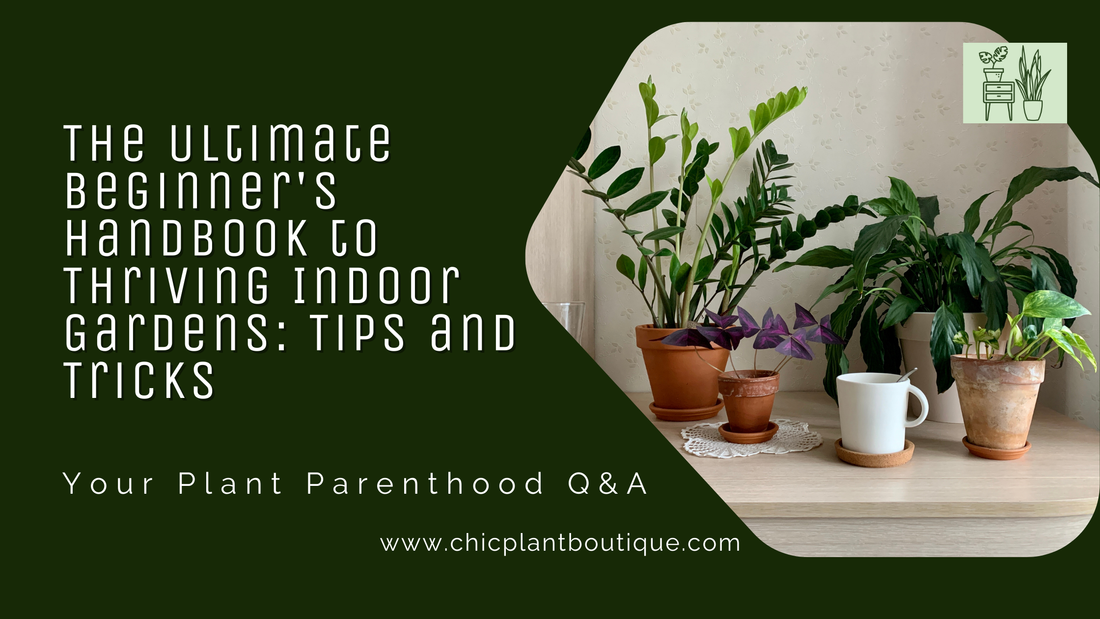
The Ultimate Beginner's Handbook to Thriving Indoor Gardens: Tips and Tricks
Share
Your Plant Parenthood Q&A: Tips and Tricks for Beginners
Hey there, budding plant parents! Whether you’ve just picked up your first succulent or you're thinking about turning your living room into a mini-forest, you’re in the right place. I’m here to answer some common questions and sprinkle in a few tips that’ll help you thrive alongside your green pals.

Here's a glimpse of some beginner-friendly plants that can brighten up your space with minimal effort. From Snake Plants to Pothos, these green gems are perfect for both novice and seasoned plant parents alike. Remember, every plant story starts with that first little leaf!
Q: What’s the easiest plant to start with?
A: Great question! A lot of newbies start with a Snake Plant or a Pothos. They're tough cookies and can survive low light and forgetful watering. Plus, they’re pretty forgiving if you’re not quite in sync with your plant care routine yet. Julia, a reader from Chicago, says, "My Snake Plant survived my busy season at work when I forgot about it for over a week!"
Pro tip: I wouldn't recommend snake plants if you are interested in babying your plant. They can be prone to root rot with too much watering. But if you are looking more for a set it and forget it, then this is definitely the way to go!
Q: How often should I water my plants?
A: Ah, the classic question! It really depends on your plant type and environment. A good rule of thumb is to stick your finger an inch into the soil. If it’s dry, it’s time to water. Remember, it’s better to under-water than over-water. As my friend Max always reminds his followers, "Plants are like us: they need to breathe—let the soil dry out!"
Q: Where’s the best spot for my plant?
A: Light, light, and more light! Most plants love a sunny windowsill. If your light is limited, like in a basement apartment, consider low-light heroes like ZZ plants or Peace Lilies. Sarah in Seattle found success by rotating her plants every few weeks to get even light exposure.
Pro tip: Start with one plant at a time and learn the needs of that plant before adding another to your collection. Check out the specific blog discussing the plant you started with and see the requirements of that plant. Once you feel confident you have it down, add another. You can continue to learn and grow from there!

Q: What do I do if my plant looks sad?
A: Don’t panic! First, check the basics: water, light, and pot drainage. Sometimes, a little change can make a big difference. If leaves are yellowing, it might be overwatering. If they're dropping, maybe under-watering or lack of light. And remember, every plant has its off days—just like us!
Q: How do I know when to repot my plant?
A: If your plant looks a bit cramped or roots are sneaking out the bottom of the pot, it might be time. Repotting usually happens every 1-2 years. Cara, a new plant mom, shared, "I was nervous about repotting, but once I did, my Fiddle Leaf Fig shot up like crazy!"
Pro tip: Save your repotting for spring and summer. Your plant will bounce back quicker in the active growing season. And be aware that your plant may experience a little bit of shock after repotting, so give it a few days to bounce back before you freak out.
Starting your plant journey is incredibly rewarding and these little green friends have so much love to give. Remember, every plant parent makes mistakes and every mistake is a chance to learn. Happy growing!
Got more questions? Drop them in the comments or share your plant tales with us! #chicplantboutique & @chicplantboutique